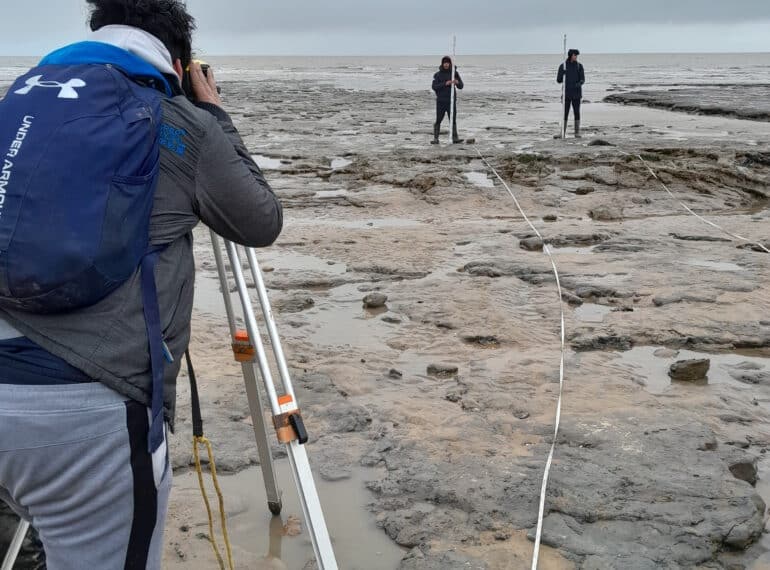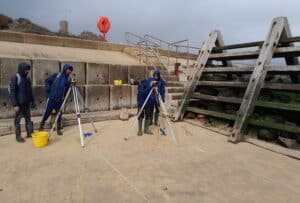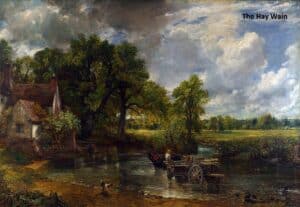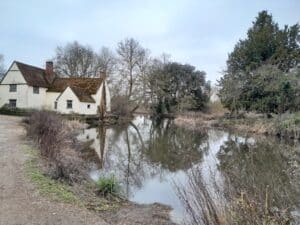
The sands of time may be slipping away for the crumbling coast of Essex – but not if QE’s A-level geographers can help it!
 Braving a biting chill on the beach, the Sixth Form group investigated not only the threat posed by rapid coastal erosion at Walton-on-the-Naze, but also evaluated steps being taken by the town’s authorities to check it.
Braving a biting chill on the beach, the Sixth Form group investigated not only the threat posed by rapid coastal erosion at Walton-on-the-Naze, but also evaluated steps being taken by the town’s authorities to check it.
Geography teacher Chris Butler said: “Fieldtrips like this are so important in bringing to life what can be rather abstract concepts, such as coastal erosion and management. I was delighted with the boys’ approach across all three days of the trip. They worked extremely hard in challenging conditions and were a credit to the School.”
 Walton has one of the fastest retreating cliff lines in the British Isles: on average, the cliffs are retreating between one and two metres every year. That the cliffs are falling away so rapidly is due largely to their geology.
Walton has one of the fastest retreating cliff lines in the British Isles: on average, the cliffs are retreating between one and two metres every year. That the cliffs are falling away so rapidly is due largely to their geology.
“The fossiliferous clays and sands exposed in the Naze area belong to the London Clay and Red Crag formations, and provide evidence of prehistoric life and conditions 54 million years ago and 2.5 million years ago respectively,” said Mr Butler. “Fossils, such as those of shark teeth and mangroves, occur commonly throughout both, and the area has attracted fossil-hunters since the 19th century.
 “However, the formations unfortunately represent a relatively weak barrier to coastal erosion.”
“However, the formations unfortunately represent a relatively weak barrier to coastal erosion.”
Local officials have implemented a large number of strategies in a bid to slow the rate of erosion and protect the town and its services.
As well as looking into the impact of the erosion on both landforms and the built environment as part of their A-level studies, the boys also investigated the relative success of each management strategy the town had introduced and the impact that these techniques have had on both physical and human environments.
 “Although no fossils were recovered, the fieldtrip was a great success, and despite the weather being bitterly cold, the boys demonstrated admirable fieldwork skills in sampling and collecting their data before analysis back in the classroom,” said Mr Butler.
“Although no fossils were recovered, the fieldtrip was a great success, and despite the weather being bitterly cold, the boys demonstrated admirable fieldwork skills in sampling and collecting their data before analysis back in the classroom,” said Mr Butler.
The party stayed just over the Suffolk border in the Field Studies Council’s (FSC) Flatford Mill, which was once owned by John Constable’s family. He immortalised the Mill in his famous painting, The Hay Wain, in 1821.
Mr Butler added: “The boys were complimented on their positive attitudes, outstanding work ethic and manners by FSC staff and teachers from other visiting schools.”
Top to bottom, the pictures show: Year 12’s Sabbir Hossain using a level to chart platform gradient; boys profiling the protected beach and ‘slope toe’ at Walton; Red Crag and London Clay formations; Flatford Mill, as depicted in The Hay Wain, and the mill as it is today.
